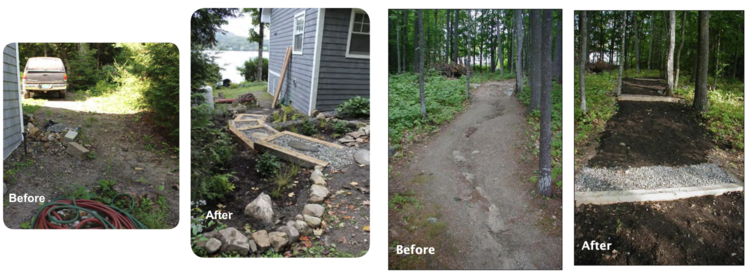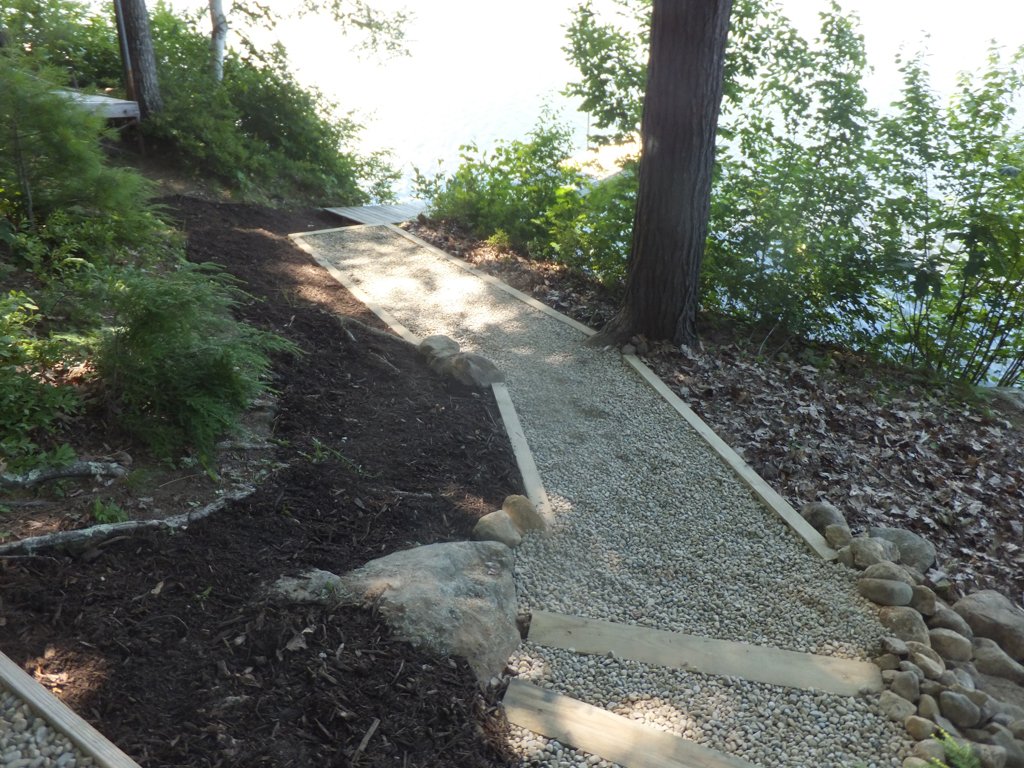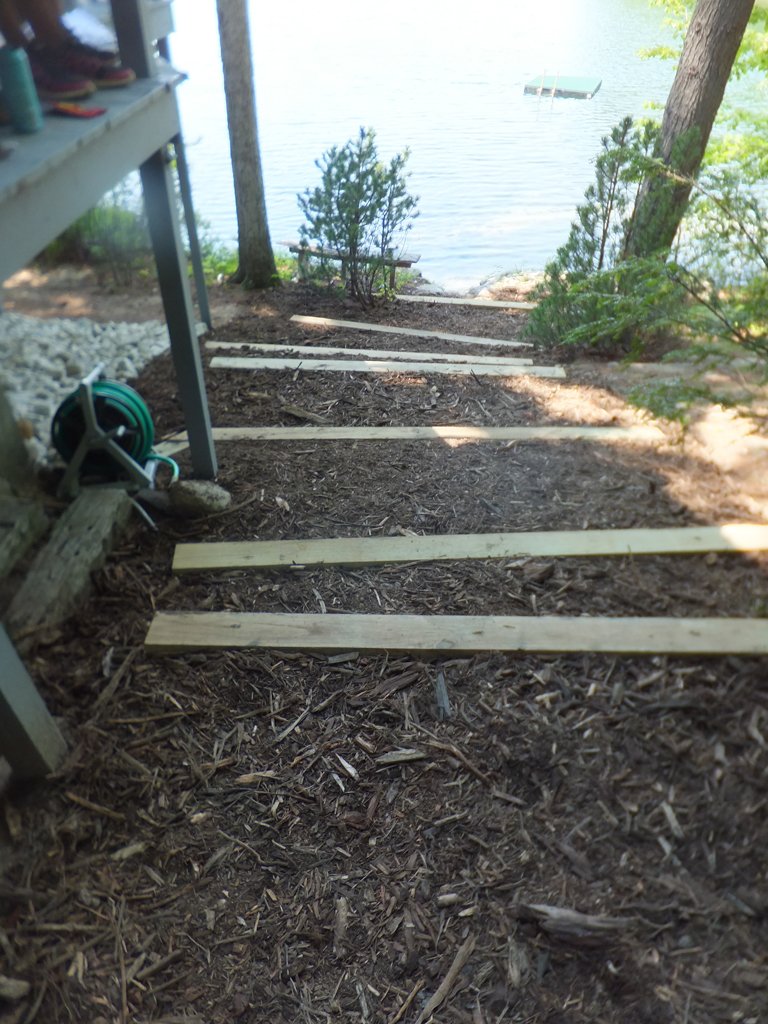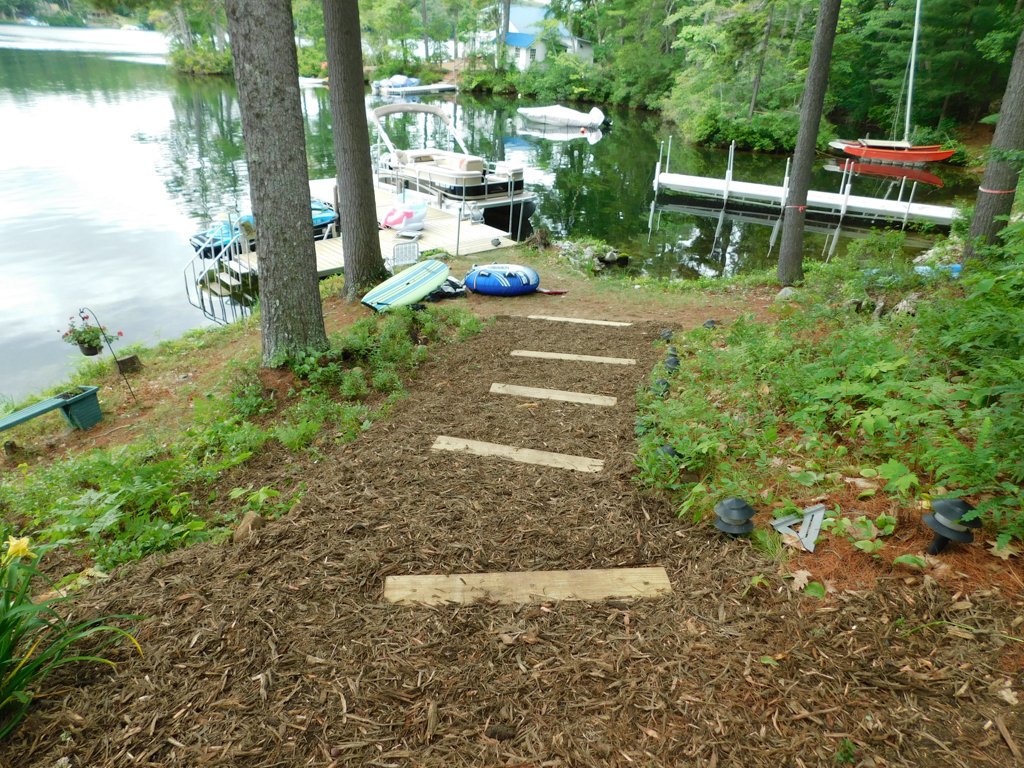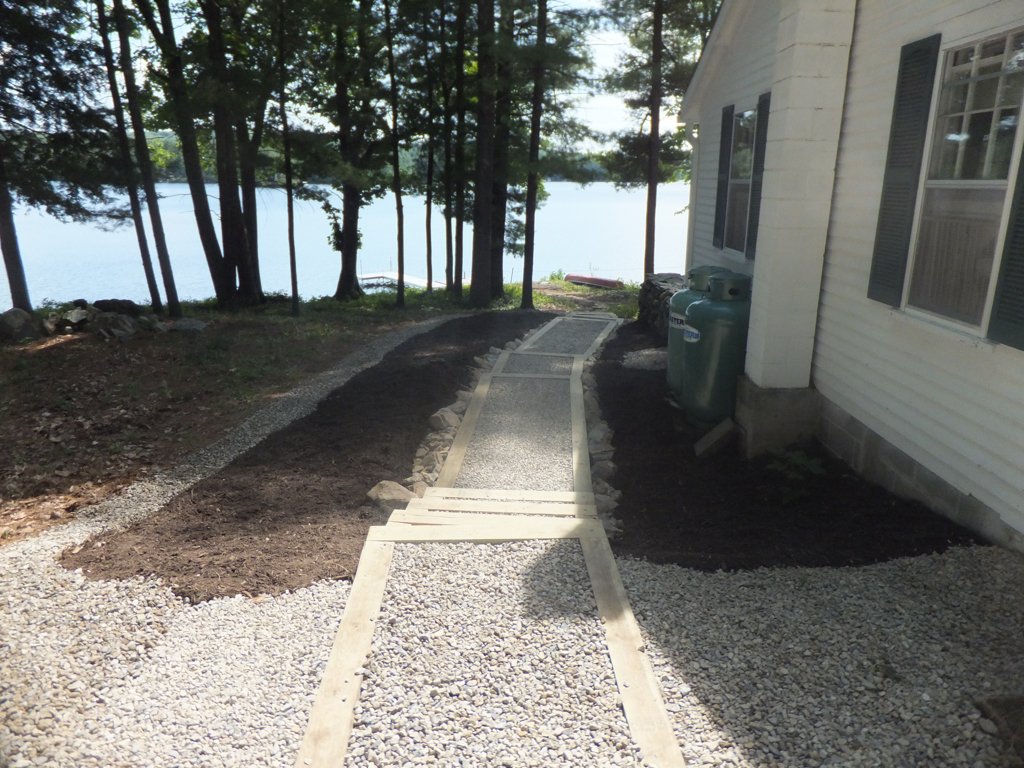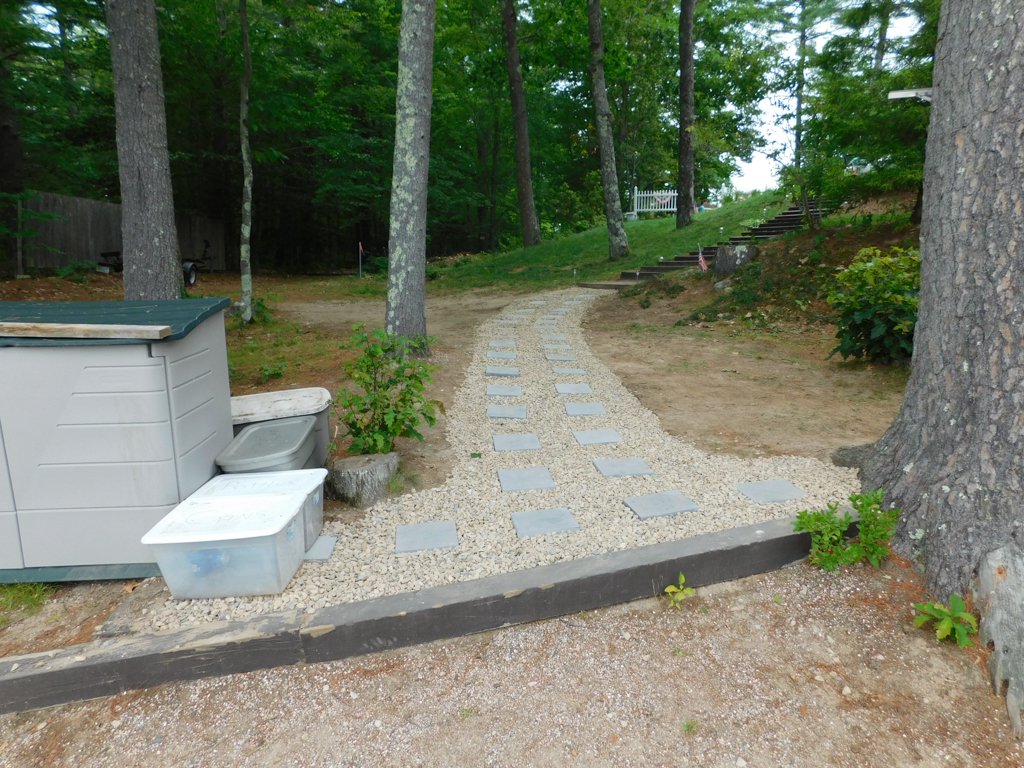Paths and Walkways
Properly designed pathways direct foot traffic, absorb water, reduce the rate of flow, and protect soil. Pathways can also reduce the potential for erosion and minimize the amount of pollutants flowing from your property into local streams and lakes.
